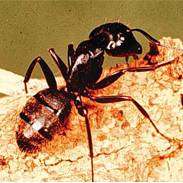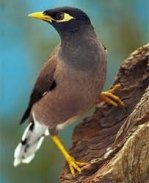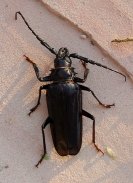



Spider Control North Shore & Northern Beaches

The Home’s Unwelcome Guest
Are spiders taking over your home or workplace? R.I.P Pest Management are experts in identifying the types of spiders that have made themselves at home in the nooks and crannies of your space. The team will implement an effective spider control treatment and spider management plan throughout your property, giving you peace of mind and your property back.
A large majority of spiders found lurking in your home or office will not harm you, sometimes they do turn out to be a real nuisance and a hazard. See below for a description of the most common spiders [anchor link to What are the Most Common Spider Species section below] you’ll see at your property.
The most common spiders found in Sydney’s Northern Beaches include the Funnel Web spider, Red Back spider, White Tail spider, Mouse spider, Black House spider, Wolf spider, Huntsman spider, Trapdoor spider, Garden Orb Weaving spider, Saint Andrew's Cross spider and Jumping spider.
Spiders are part of the Arachnida class. They have four pairs of legs, two body sections (cephalothorax and abdomen) and no antennae. Females spiders produce a silken egg sac containing many eggs. The silk is produced structures called “spinnerets”, which are located at the end of the abdomen.
The eggs hatch inside the egg sac, and the spiderlings emerge and immediately disperse using silken threads. Young spiders moult several times before reaching adulthood.
The average lifecycle for a spider is 12 months; however, some can live for many years.
When do Spiders Bite?
Contrary to popular belief, while spiders are capable of biting people, they rarely do. Spiders will only bite in defence when they are handled or caught in clothing.
The Redback and Sydney Funnel Web spiders have been responsible for many deaths in the past, but since the introduction of anti-venoms, no deaths have been reported for these species since 1956 (Redback) and 1980 (Sydney Funnel Web).
What are the Most Common Spider Species?
These are the most common species of spider we encounter in Sydney’s Northern Beaches homes and businesses.
GROUND DWELLING SPIDERS – These spiders live in holes in the ground, rock crevices and leaf litter. They emerge searching for food and to find a mate. Females tend to be larger and have a thickly-set body and large abdomen.
SYDNEY FUNNEL WEB SPIDERS(Atrax robustus) – This spider is black, with a shiny head section (cephalothorax), and long spinnerets. Females are 30mm long, while males are 25mm long and have small palps and a spur on their second front legs. Unlike other spiders, the male is far more toxic than the female. The male spider dies shortly after mating where as the female can live for years.
Sydney Funnel Webs prefer moist, dark environments with moist sand and clay. They are active during summer and autumn months and most active at night.
They build funnel shaped barrows filled with silk that open to either a Y or T shaped with two entrances. When pray – insects, frogs, cockroaches, beetles and lizards, walk across the silk-covered entrance the Sydney Funnel Web Spider will jump out and inject prey with their venom. When they bite, they grip onto their victim and repeatedly bite them.As the name suggests, the Sydney Funnel Web Spider is most commonly found in and around Sydney, up to the Central Coast and south to the Illawarra regions, they can also be found in the west to the Blue Mountains.
OTHER FUNNEL WEB SPECIES – There are many other Funnel Web species considered dangerous, such as: the northern tree Funnel Web and the Toowoomba Funnel Web. Their basic appearance is similar, but habits, size and mating seasons vary.
TRAPDOOR SPIDERS – The most common of this species is the Sydney Brown Trapdoor (Misgolas Villosus). Due to similar size (15mm - 30mm), Sydney Trapdoor Spiders are often confused with Funnel Webs. Their furry body has golden brown hairs and grey bars on its stomach. Females are larger than males – who have small double spurs in the middle of their second row of legs. Unlike funnel webs, they have short, blunt spinnerets.
They tend to live in drier, more open areas than Funnel Webs. They make their home in lawns, gardens and bushland. They feed on ground-insects and other arthropods including cockroaches, beetles, slaters and even other spiders.
Despite the trapdoor spiders name, most don’t actually make a trapdoor over their open barrow. The exception is the Sydney Trapdoor Spider, who makes a light trapdoor over its barrow.
These spiders will bite if provoked, and while bites are painful, no deaths have been reported.
MOUSE SPIDERS (Missulena) – Also confused with Funnel Webs, Mouse Spiders are black and shiny, with a large round cephalothorax and base of the fangs. Females are 25mm long and males are 15mm.
Mouse Spiders can be found right through Australia hiding in forests and bushland. The spiders build large ‘mouse-like’ barrows 20-50cm deep, with a side chambers for protection against pray. The side chamber also acts as a nursery to eggs and spiderlings. Barrows commonly have two openings (at right angles to each other) and are covered with a dirt ‘trapdoor’. They usually capture their prey from within their barrow with their powerful jaws and venom, they like to eat ants, beetles, small lizards and frogs and also other spiders.
They are slow moving and usually non-aggressive. Although they can inflict a toxic bite with symptoms similar to The Sydney Funnel Web spider, no deaths have been recorded.
WOLF SPIDERS (Lycosidae family) – Wolf Spiders are mottled grey and brown in colour with variegated patterns that range from light brown to yellow running down their legs and body. They vary in size from 15mm-25mm in length. The female carries her egg sac around until the spiderlings hatch and when they’re old enough they disperse by ballooning or on the ground. Wolf Spiders live up to two years.
These spiders are often found in the garden or leaf litter. Most Wolf Spiders will wonder and seek refuge among vegetation. Some do build barrows, much like the Mouse Spider.
They don’t spin web and as opportunist hunters, they pounce or chase their prey.
They are not aggressive and tend to move quickly when disturbed.
ORB-WEAVING SPIDERS – One of the largest species of spiders in Australia, the Orb-Weaving Spiders are stout, with a reddish-brown leaf pattern over their body. Females are 20-30mm and makes are slightly smaller measuring around 15mm-20mm.
As their name suggests, Orb-Weaving Spiders build large sticky webs between trees and shrubs, where they wait in the center of the web for flying pray to be trapped. They are most active in the evening.
The female spiders will live for approximately 12 months. They lay their eggs in the late summer to autumn – the fluffy egg sac can be found on foliage.
None of the species is considered dangerous, and are non-aggressive. However, they can bite if handled or disturbed.
GARDEN ORB SPIDERS(Eriophora transmarina)– A light to dark brown, hairy spider with a large abdomen. Females are 20mm long, and hide in vegetation during the day, constructing their webs at night.
LEAF CURLING SPIDERS(genus Phonognatha) – Brown with yellow markings, this spider grows to 14mm long. This spider has long legs and a large flat abdomenThey generally hides in a curled-up leaf at the centre of their web.
Leaf Curling Spiders can be found in urban areas, forests and woodlands. They curl up a leaf from the ground to form a protective cylinder, closed with silk at one end. With their legs out, they feel for vibrations of captured insects. The cylinder protects the spider from predators such as birds and parasitic wasps.
ST. ANDREW’S CROSS SPIDERS(Argiope keyserlingi) – This spider has a brown head section, with a yellow and brown striped abdomen. Females are 10mm-16mm long, with long legs and a small cephalothorax. The cream coloured males are smaller measuring 3mm-4mm.
Their large orb webs have a distinctive a zig-zag design. The spider sits in the web with its legs together in an cross (X) shape. The strong silk web reflects UV light, which attracts flying insects.
St. Andrew’s Cross Spiders are found throughout eastern Australia and live in a range of habitats including rainforests, open forests and garden trees.
REDBACK SPIDERS(Latrodectus hasselti) – Found in all Australian states, Females are 15mm long, and velvety black, with a orange to red stripe on the abdomen. They have a distinctive round body about the size of a pea, measuring 1 cm. Males are 3mm-4mm long and are less distinctive with a light brown body and white stripes on their upper abdomen. Young Redbacks have an additional white stripe down their abdomen. Males do not bite.
The Redback constructs its web in dark, undisturbed environments, such as under houses, among rubbish, logs, shrubs and in seldom used outside toilets. During winter, sightings are less common.
An extremely toxic spider, the Redback has caused many deaths in the past. Unlike the Sydney Funnel Web, the Redback is non-aggressive and only bites when cornered, protecting its eggs or when caught in shoes or clothing.
BLACK HOUSE SPIDERS(Badumna insignis) – Dark brown to black in colour, it has long branded legs. Females are 18mm in length and are larger than males at 9mm.
This spider is often found around houses on windows, guttering, in the corners of sheds and in the bark cavities of trees. The Black House Spiders web is an untidy funnel-like shape. In the house, they feed on pests that are attracted to light of a window.
Its bite is toxic, causing pain, nausea and sweating, but no deaths have been recorded.
HUNTSMAN SPIDERS(Sparassidae family) – This large species is between 15-40mm long with a large leg span, they have a buff colour, and a flattened, hairy body.
Huntsman spiders live throughout Australia, appearing on the house walls, in tree holes and under loose bark. They feed off insects and other invertebrates.
The female can lay up to 200 eggs in one sac of white paper-silk. She will protect it without leaving for around 3 weeks. During this time, the female is most aggressive. Once hatched, the young spiders will stay with their mother for a few weeks. The Huntsman lives for up to two years.
Huntsmans are non-aggressive and rarely bite. Their bite can be painful, though non-toxic.
WHITE TAILED SPIDERS(Lampona cylindrata and L. murina)– Dark reddish to grey in colour, White Tail spiders have a cigar-shaped body with white marks on the end of its abdomen. Males are 12mm and females measure much lager at 18mm.
These spiders are often found near the tops of walls in bathrooms. They also live in gardens, bush and scrub. They’re most active at night when they hunt other spiders, they particularly like black house spiders . They noticable disk shaped egg sacs carry up to 90 eggs.
This non-aggressive spider may bite if handled or caught in clothing. Bites cause burning, localised pain, which may be followed by blistering and ulceration. No deaths have been recorded.
Don’t suffer the intrusion of these frustrating pests for one moment longer. Simply contact R.I.P. today, for a comprehensive treatment to rid your home or business of spiders.













